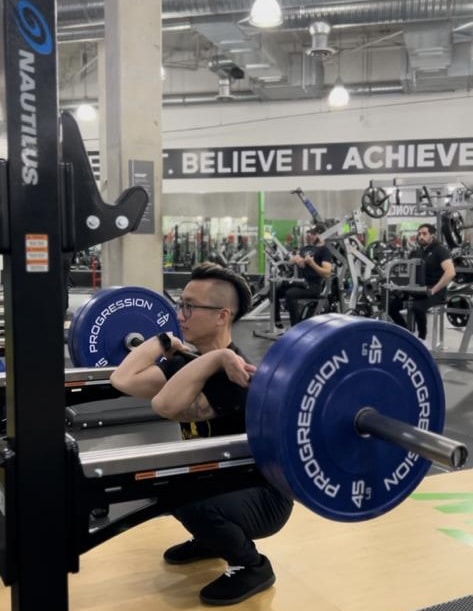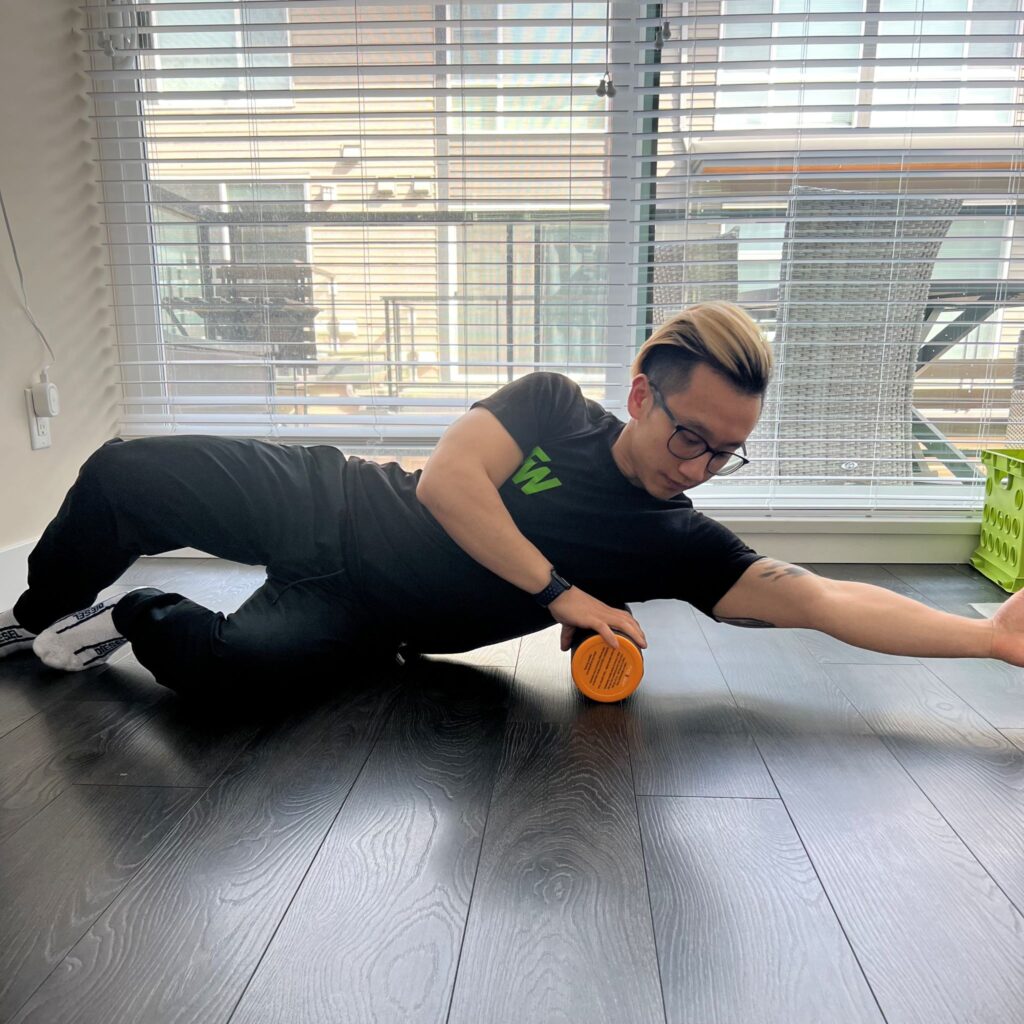March 30, 2023
The Benefits of the Front Squat
First the WHAT and the WHY
Whether you’re a personal trainer or just a fitness enthusiast, front squats are a variation of the squat that can add a lot to your program and development. Most people are familiar with the back squat and for good reason, it is one of the staples of every fitness program especially hypertrophy and strength based programs. The front squat on the other hand doesn’t see as much usage.
First let’s go over what the front squat is and then that’ll help us to understand why we might use it and why it isn’t used.
The front squat changes the where the load is carried as well as the relative mechanics of the squat. It is still a squat but the load is held in the front rack position which is in front of your head on your shoulders rather than behind your head on your upper traps.
The front rack position sits on the shoulders with the wrists supporting the barbell in an extended position and elbows relatively up.
Due to where we place the load, the front squat is more vertical in the bar path and movement which allows you to load more on the quads as well as challenging core strength to resist collapsing the torso down. The front squat is more difficult to load compared to the back squat due to the mobility requirements and so when attempting the front squat, stick to lighter weights while you build it up.
One way of incorporating the front squat is to start you back squat day warm up with front squats until your form and control begins to exceed what you can handle with the front squat then switch to the back squat. You can also use it as another way to add direct quad work as an accessory exercise.

Front Rack 
Front Squat Descent 
Bottom of front squat
Now, we focus on the HOW.
Front squats can be a gateway to all things great and compound. In order to perform a proper front squat, you must have a ton of control, mobility and stability. It’s a skill. They require you to work from the trunk of your body while allowing the bar to settle into you. Your mid and upper back will light up along with your core/hips/quads.
They open the doors to Olympic lifting and best of all, if you can clean it, you can front squat it. They make a busy gym a lot easier to navigate when you don’t need to rely so heavily on the racks. Last but certainly not least, a solid front squat will dramatically improve your backs squat.
If you’re intrigued let’s take a look at some tricks to get you front squatting.
It is important to know that the bar is held up by your torso and not all on your poor wrists! The bar must settle into you.
This is the part that most people struggle with, so naturally, you will need to mobilize and stabilize.
I’m going to give you a few tricks to help make this process easier for you.
Front Squat Setup
So, let’s start on ways of getting yourself better suited to do front squats by clearing any muscular/soft tissue restrictions, lengthening those same shortened muscles, strengthen/activate the lengthened/weaker muscles while finally patterning the movement.

Roll Lats 
Thoracic Spine opern 
Wrist Extension Stretch 
Supinated Wrist Extension Stretch
- Start by rolling your latissimus dorsi (lats) as well as doing a thoracic spine opener (T spine). You’ll want to open your chest without letting your ribs flare too much and then crunch back up, repeat that process a few times.
- Next we’ll open up our wrists by using 2 stretches, one where our wrists are turned up. In both versions you’ll want to focus on your breathing, rock forward and back then try to pull yourself deeper into the stretch.
- Hang and focus on the 360 breath. Imagine you are wearing a belt and you need to breath in and expand the belt with each breath. No chest breathing!
- Get comfortable squatting a light bar or use a goblet squat.
- This will allow you to become more self-aware, help with shoulder stability, as well as get you better acquainted with your upper back muscles.
- Practice holding and bracing in the front rack position. Don’t squat it yet! Just get comfortable feeling the weight sit into your front delts.
- Look for those kinetic check point sensations. Do you feel your upper back, core, and glutes being engaged.
- Try the front rack again. You aren’t meant to hold on to the bar with your fingers, the bar is just resting on them so it can help to relax the fingers ever so slightly.
- Have patience. If you feel your form still needs some work, keep working on the above steps. You can use these steps as a warm up on both upper and lower body days.
Try these tips above and let us know what you think about the front squat if you don’t already use it and if you do, did these tips help you perform them better?
Curious to learn more? With BCPTI we help you learn how to cue and execute all types of movements such as the front squat with our certified personal training program. We teach you the industry relevant knowledge to pass the NASM certification and become a successful personal trainer.
Tags:
Related Posts
We’re here to help you!
Questions, comments or want to register? Fill out the form below and we will contact you shortly. Thanks!
"*" indicates required fields

